Moles (nevi) are quite common on the human body. They can be congenital or acquired. They differ in size, structure, color, etc. Most often they do not pose a danger, but under certain conditions they can transform and become malignant under the influence of excessive sun rays, constant injury from clothing, etc. In this case, it is important to remove them in time. But the desire to get rid of a mole can also be caused by the cosmetic defect that it forms.
Regardless of the reason for the removal, it is better to have it done by a doctor, but not in a beauty salon. The mole must be examined by a specialist (oncodermatologist) and give his opinion. In addition, only a doctor can determine the choice of optimal treatment and the advisability of removal. Carrying out histology is also possible only in a clinical setting.
How are moles removed?
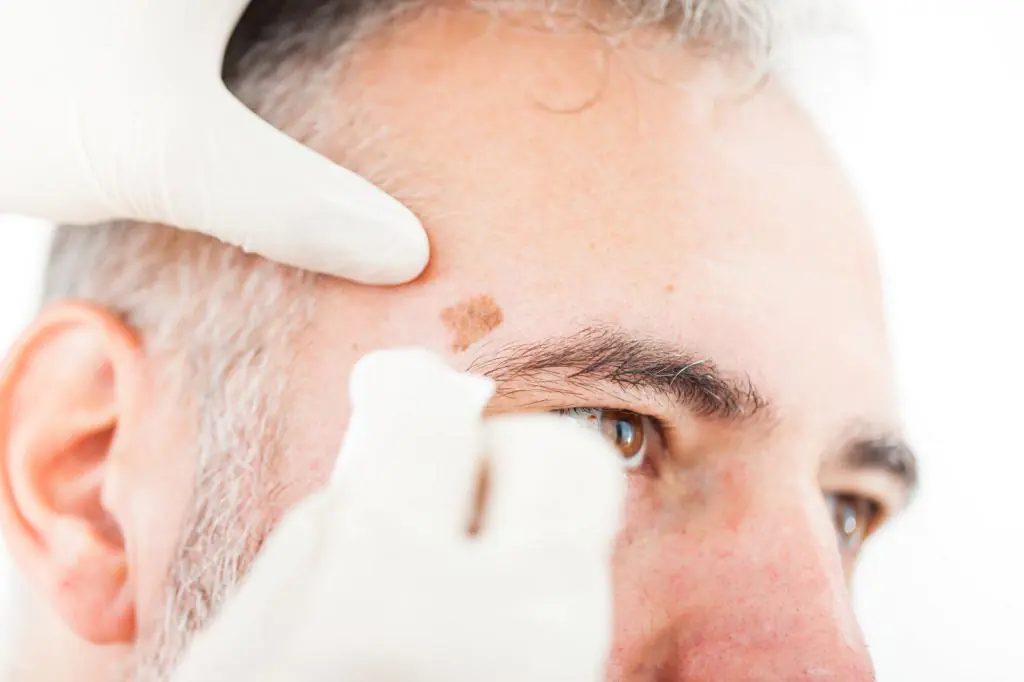
There are several removal methods, and they all have their own indications and contraindications. The classic method is the surgical use of a scalpel. This excision is quite rough in terms of scarring, especially on the face, but it is ideal for moles that are deeply embedded in the skin. The same method is best suited for cancer nevi on open areas of the body. Sutures on the face are removed on days 4-7, and on the body on days 8-20 after the removal procedure.

Another popular method is electrocoagulation. It is carried out for 15-30 minutes and consists of burning out a mole or papilloma with an electrode. There are almost no traces after this, the procedure is considered non-traumatic. Scars after it are rare.
Cryodestruction is the removal of moles by freezing with liquid nitrogen. According to statistics, wounds always heal much faster after this method.
Removal with a radio knife - this low-traumatic procedure is second only to laser. Leaves virtually no traces.
Laser is a highly sought-after method for its safety and speed, as well as its effectiveness. The laser, in addition, clogs the blood vessels, preventing bleeding and relapses. It is not used only for oncology.
What to do after removal?
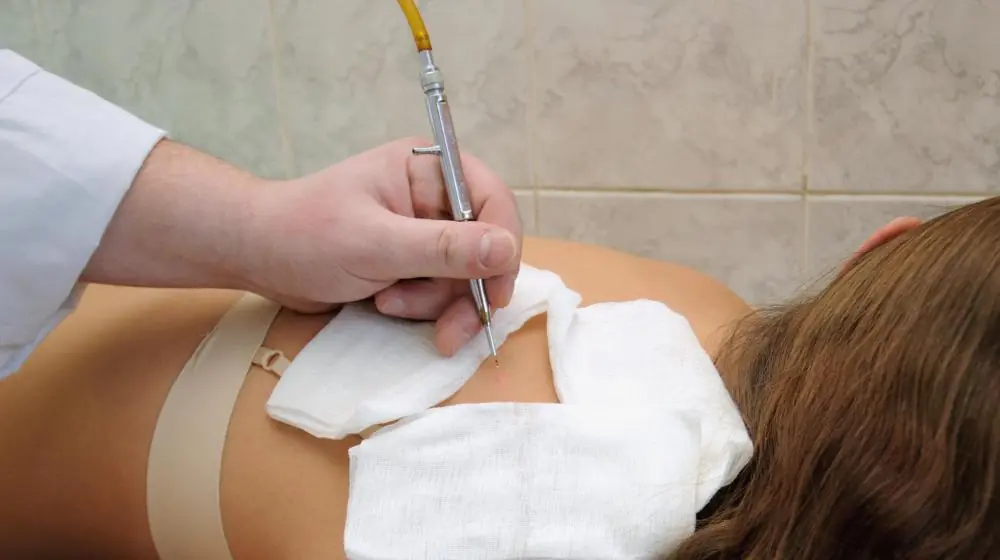
After the procedure to remove a mole, as after any operation, treatment is necessary. Damaged epidermis needs to be restored as soon as possible. After removing a mole (nevus) using any method, the rehabilitation period is important. There are general rules for dealing with a remaining wound. If you follow all the doctor’s instructions and treat the skin correctly, there will be no complications.
A mole was removed with a laser - how to treat it? It is easier and faster to process marks after laser removal. The fact is that with this method the surface of the skin is not disturbed, and it works as if it were healthy. Only a small spot appears on the surface, resembling a burn. True, it heals quite quickly - 4-5 days.
How to treat a mole removed by laser? With any method of operation to remove a mole, it is necessary to take into account that from the 3rd day it is possible to use wound healing creams such as Solcoseryl, Baneocin, sea buckthorn oil or their analogues. They have a wound healing effect.
It’s a different matter when, after excision with a scalpel, sutures are applied. Then skin care is required.
Stages of healing
A mole has been removed - how to treat it and how does it heal? Wound healing occurs in 3 stages:
- At stage 1 – days 0-7 – there is postoperative swelling, redness and soreness. A crust forms. Treatment at this stage is carried out with antiseptic solutions or antibacterial ointments.
- At stage 2 - 7-14 days - the formed hematomas resolve, and the upper layer of the epidermis grows. The crust disappears. New skin should be protected from the sun to avoid hyperpigmentation.
- Stage 3 – day 15 and after – scar formation. At this stage, the crust has already disappeared, and Contractubex ointment will help a lot as a finish. In addition to it, the Dermatix silicone bandage, ScarFix gel, etc. show good results. Dermatix moisturizes the skin, relieves itching, and restores pigmentation, which may be disturbed due to scars.
Also commonly used wound healing patches include Cosmopor and FixoporeS.
When using a laser, by day 20 the skin is completely restored. In this case, no further care is required.
Doctors often prescribe D-Panthenol, Curiosin, and Panthenol as antibacterial ointments.
The drugs must be prescribed by a doctor. Self-medication is excluded.
A good option is Solcoseryl ointment. Its properties:
- stimulates metabolic processes in the skin
- safe
- actively heals.
It is applied only to a dry surface when the upper layer of the epidermis has already been formed - 5-6 days after removal of the nevus.
Skin care after removal
During the first week, the wound is covered with a dark crust, which generally serves as a protection, and which in no case should be forcibly removed. It covers the damaged area until new skin grows. Also, you should not get it wet, smear it with creams, cosmetic masks, etc.
So, you’ve removed a mole – what should you use to treat it? On the first day, it is very good to treat the damaged area of skin with potassium permanganate - the effect is disinfecting and drying. During the processing process itself, it is necessary to maintain sterility. This means using disposable supplies. You must wear disposable medical gloves if you do not have them, you must treat your hands with alcohol or Chlorhexidine.
Solution of potassium permanganate and "Fukortsin"
Antiseptic solutions are intended to prevent suppuration of the place where the mole was removed. What to process? More often than others, potassium permanganate and Fukortsin are used. Potassium permanganate or potassium permanganate is a strong oxidizing agent and even when diluted retains its properties. The potassium permanganate solution should be 0.1-0.5%. This means consumption of 6-8 of its crystals per liter of water. It should be poured into a glass container and be warm. If it is impossible to count, make the solution “by eye” - after mixing it should have the color of red wine.
After preparation, you need to dip a cotton swab into the solution and gently wipe the surface of the former mole. The surrounding skin should also be wiped.
"Fukortsin" is a ready-made pharmaceutical solution of dark red color. Has antimicrobial and fungicidal effects. It can also be applied, but it should not be allowed to come into contact with mucous membranes. Treatment frequency is 1-3 times a day.
How else to treat the mole removal site? It is possible to use solutions of "Chlorhexidine", "Furacilin", brilliant green, iodine, chamomile infusion, hydrogen peroxide.
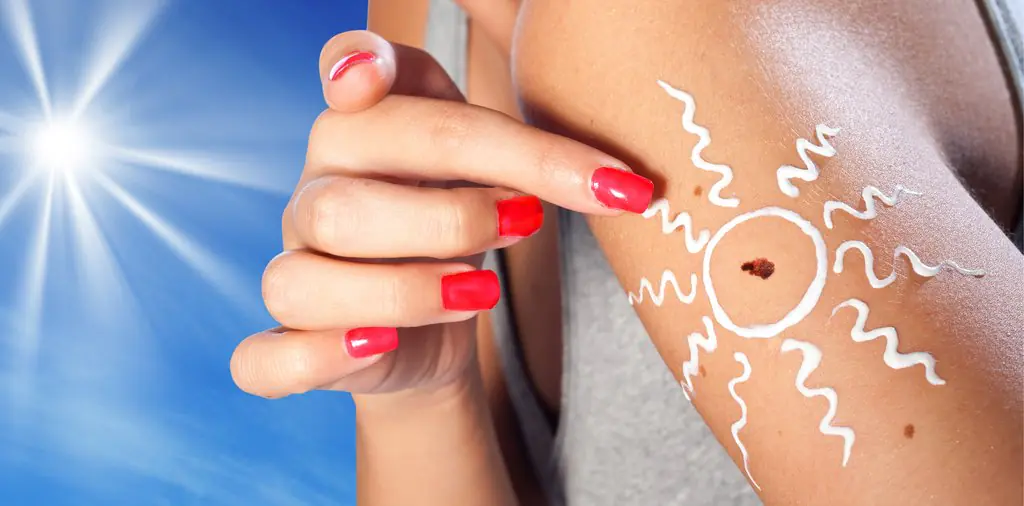
After about a week, the existing crust, in the absence of complications, falls off on its own, and fresh new skin remains in its place. It can easily be injured, so you need to protect it from damage and ultraviolet radiation. Over time, its color evens out. It should be protected regardless of the time of year - before going outside, lubricate the skin with sunscreen. Additional skin treatment after mole removal is needed in case of infection in the form of weeping, pus, itching, redness, etc.
Bandage or patch

A mole has been removed - how to treat the wound? In addition to antiseptic solutions, the main attributes are plasters and bandages. Today, instead of the usual bandages and adhesive plaster, special devices are used that not only protect the wound, but also promote rapid healing.
If a mole has been removed, what should I use to treat it? Care may be as follows - Mepiform silicone patch - created specifically for the resorption of hypertrophic and keloid scars. Available in different shapes and sizes. The treatment period for such scars is long, up to 8 months.
Care for 10-14 days after the procedure
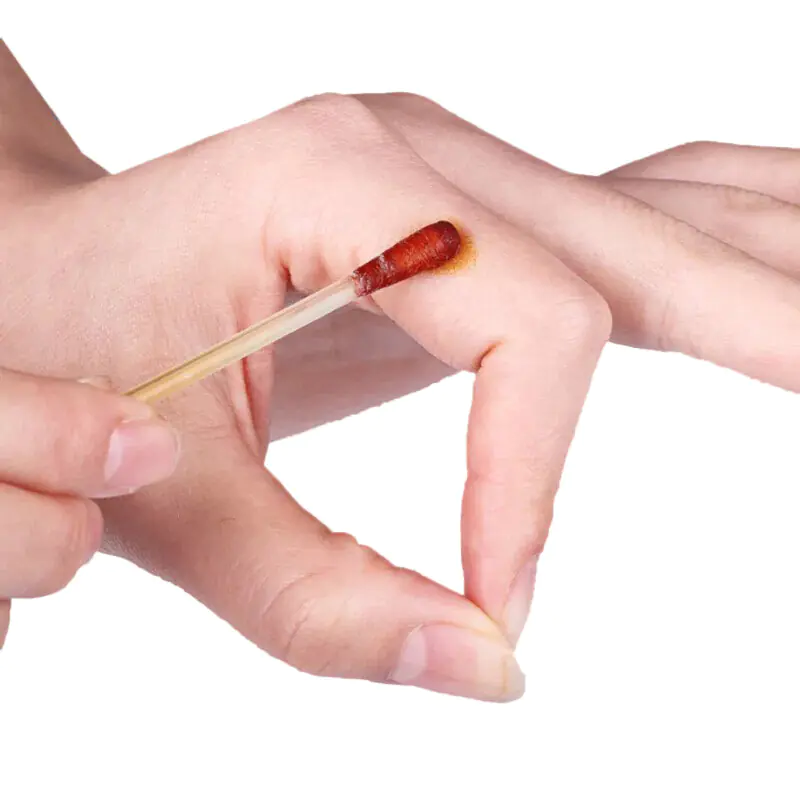
A mole has been removed - how to treat it, and how does the wound heal? Most often, 2 weeks after excision, the existing crust disappears, and in its place remains a new thin pink skin. Then you should definitely use a wound-healing ointment: “Actovegin”, “Rescuer” cream or “Levomekol”. They are used for 10-14 days.
By the end of 3 weeks everything is usually healed and treatment is stopped. But with increased sensitivity, itching may persist, and the doctor may prescribe special creams with an antipruritic effect: Sinaflan, Beloderm and their analogues. They often relieve itching immediately, from the first use.
Reparative processes are accelerated with the help of vitamin-mineral complexes, creams with hyaluronic acid, and the use of peelings.
How to avoid scars?
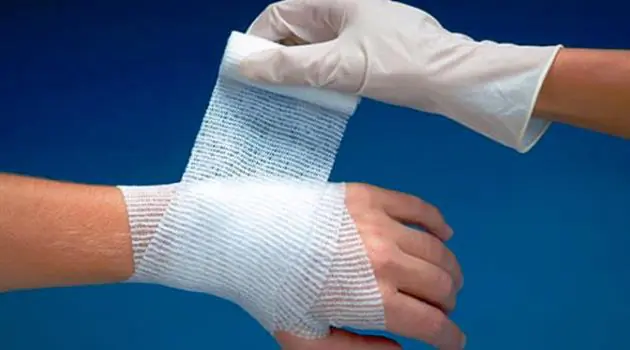
All modern methods of mole excision are initially aimed at preventing scars from forming. But sometimes this cannot be avoided.
Scars appear as a result of the growth of new skin cells at the site of damage. Therefore, for preventive purposes, doctors often recommend the Contractubex gel, which was already mentioned above. It contains onion extract, which inhibits fibroblasts, which provoke the growth of scar tissue. Heparin in the drug prevents the formation of blood clots, softens the scar and restores the skin. Allantoin has a keratolytic effect and increases skin permeability. Serae onion extract has fibrinolytic and anti-inflammatory properties, controls the number of fibroblasts. "Kontratubeks" removes scars completely within a month if they are fresh. Rub it in 2-3 times a day.
Don't forget about other restrictions:
- do not scratch the healing site
- Do not allow dry skin
- It's better to quit smoking.
If these points are not observed, the scars will be large, and small ones, resembling a thin cobweb, will be a natural consequence. Scars in the place where a mole was removed are easily masked with decorative cosmetics. What to process? Limitations on means and actions:
- It is prohibited to sunbathe, visit solariums and beaches, and go to the sauna and bathhouse. Open areas should be covered with clothing, the head with a hat or umbrella, and sunscreen should be used for the face and neck.
- Do not touch the injury unnecessarily to prevent infection.
- Do not expose the painful area to injury. This will make the condition worse. Repeat surgery may be required.
- Do not peel off the resulting crust. This slows healing and promotes scarring.
- After surgery, the injured area should not be exposed to scrubs or decorative cosmetics.
- For the first 14 days after surgery, until epithelization occurs, the affected area should not be wetted. In case of urgent need, bathing is in principle possible, but only if there is a plaster on the site of the operation.
- Do not expose the wound to friction with hard towels or clothing. Things should be thin, light and free. Children love to scratch their wounds - this requires supervision. Also, the skin must be protected from temperature changes - the condition of the wound may worsen.
When can you wash yourself to remove a mole?
On the first day, swimming is definitely prohibited. Because water softens the skin, separates cells and can cause the layers of the dermis to shed. Then, for approximately 2 weeks, the skin cannot be steamed, so saunas and steam baths are excluded.
What to do about scars
A scar or scar after mole removal occurs when the mole is large or deep, even with proper care. For the most part, scars gradually dissolve or become invisible.
To combat them, special reusable silicone-based patches have been created. After application, it is worn for a long time. It is believed that the mechanism of the positive effect on the scar in such cases is based on the fact that the bandage puts pressure on the scar and thromboses the vessels at the site of the lesion, the scar stops receiving nutrition, and as a result it decreases.
If the scar is rough and unaesthetic, you can resort to plastic surgery, but the result is not guaranteed. Some patients complain of the growth of a mole at the site of removal. This phenomenon can occur if it is not completely removed. This may be dangerous and a doctor's consultation is required.
Misconceptions about wound healing rules
Many people believe that a wound heals better if left open. In fact, it's the other way around. An applied bandage and proper pre-treatment will only speed up the healing process. Also, you should not use traditional healing methods to prevent injury and infection of the wound.
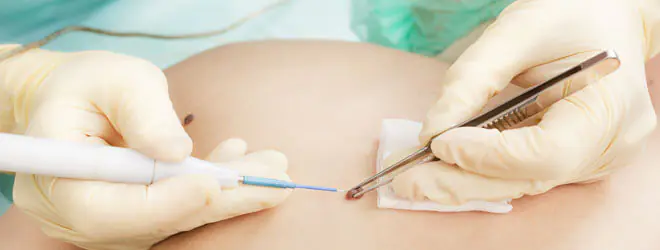
At the Center for Aesthetic Laser Medicine, moles are removed using a laser, so in the first hours after the procedure a crust appears at the site of the removed tumor, and after 6-8 hours there is noticeable swelling and redness. This is a normal skin reaction to laser coagulation. On average, the wound healing process after mole removal can take from 2 to 4 weeks. It should be understood that the larger the area occupied by the removed mole, the longer it will take for tissue regeneration in the damaged area.
Healing stages and care
During the first 7 days after the procedure, a dark crust forms at the site of the mole, which under no circumstances should be removed. The postoperative crust on the wound performs a protective function - it protects the wound from infection and allows new tissue to actively grow underneath it. For the first week after removal, the operated area should be protected from all kinds of injuries and damage - avoid rubbing clothes or washcloths, do not comb, do not allow cream or other cosmetics to come into contact. If prescribed by a doctor, the crust can be treated with disinfectants (a weak solution of potassium permanganate) or ointments with antibiotics.
On days 7-9 after the mole is removed, the dark crust from the wound should fall off, leaving behind soft pink new skin. During this period and the next 10-12 days, the damaged area should not be exposed to ultraviolet rays. To do this, you should reduce your time in the sun and use sunscreen with a maximum sun protection factor of SPF 50. Direct exposure to the sun on young skin after removal of a nevus can lead to persistent pigmentation, which is especially undesirable on the face.
By the 20th day after the laser coagulation procedure, full-fledged healthy skin is formed at the site of the removed nevus, capable of resisting ultraviolet radiation and other external influences, including mechanical ones. After complete healing of the wound, no further specialized care is required. If a slight itch is felt at the site of the removed nevus after 20 days, but the skin looks normal, you can use special soothing ointments. By the 30th day after the procedure, the hole from the removed mole is smoothed out, after which, by the 3rd month, a barely noticeable trace of the procedure remains on the skin.
General restrictions after mole removal
- For four weeks after the laser mole removal procedure, it is not recommended to visit the solarium or sunbathe in order to prevent hyperpigmentation
- For two weeks after the procedure, it is recommended to refrain from visiting the sauna and swimming pool to reduce the risk of secondary infection
- For 3-5 days after removal, it is necessary to avoid drinking alcohol, as they cause vasodilation, which can cause bleeding
- If a mole was removed on the face, then it is not recommended to apply decorative cosmetics to the laser-treated skin for 7 days.
Complications after removal
After removing a mole, you must carefully monitor the damaged area of skin. In some cases, after the removal procedure, negative symptoms may be observed that require contacting the clinic and prescribing additional therapy. These symptoms include:
- purulent discharge from the wound
- severe swelling of the skin that lasts for several days
- prolonged bleeding from the wound
- increased body temperature above normal
- severe wetting, severe itching.
Possible consequences
In some cases, the healing process may occur with some deviations from the norm, which can be eliminated with additional procedures. Such deviations are the following situations:
- Nevus recurrence (reappearance of a mole) is possible if not all cells of the mole were removed during the procedure and some microscopic nevus particles remained in the same place. This situation does not pose any health risk and requires only observation. If a mole grows back, it can be removed again if desired
- Hypopigmentation is the appearance of a white spot at the site of removal. This cosmetic defect is possible if the removed tumor is located in the deep layers of the skin. Also, sunbathing during the prohibited period can lead to the appearance of hypopigmentation. In any case, the resulting white spot does not require medical correction and will go away on its own in 1.5-2 years
- A hypotrophic scar is a depression at the site of a removed tumor that occurs due to the low rate of tissue regeneration. A deep scar is an inconspicuous cosmetic defect and does not require any intervention, as it gradually smoothes out on its own
- A hypertrophic scar is a bulge at the site of a coagulated mole, which may have a darker color than the surface of the skin. If the raised scar does not smooth out on its own after 3-6 months, then the doctor may prescribe drug therapy or additional cosmetic procedures to eliminate it.
Moles are quite unpleasant new growths that bring discomfort to a person. If they pose a threat to human health, then they are removed cosmetically. In order to ensure complete healing after mole removal, it is necessary to provide proper care after it has healed.
Mole removal
Despite the fact that moles belong to the category of benign neoplasms, their removal should be carried out only after a complete examination of the patient’s body. This is explained by the fact that the procedure is characterized by the presence of certain contraindications. It is not recommended for patients diagnosed with allergic reactions to medications. Melanoma is a contraindication to manipulation. In case of excessive tanning, it is recommended to avoid the procedure.
Removal is not carried out if the patient experiences the development of inflammatory processes on the skin. During the period of herpetic infection, manipulation of the patient is strictly prohibited. If a person has melanoma, then the mole, as well as the affected tissue, is removed. In this case, it is necessary to have an integrated approach to treatment. Before performing the procedure, it is recommended to consult with an oncologist.
There are several methods for removing moles. If the tumors are small, then a laser must be used to eliminate them. A laser beam is used to evaporate a specific area. This intervention is absolutely safe, since it does not affect healthy skin. Laser treatment is characterized by a quick recovery period and a minimum number of unwanted effects.
For large moles that protrude above the skin, surgical intervention using a scalpel or knife is recommended. In most cases, such neoplasms are characterized by the presence of a subcutaneous body, which is supplied by blood vessels. Despite the fact that a small scar remains, this method makes it possible to completely remove the mole. To remove flat moles, liquid nitrogen is often used, which is characterized by the presence of a freezing effect. After the manipulation, a crust forms, which disappears on its own.
Moles can be removed using various methods. The choice of a particular one directly depends on the type and size of the tumor, as well as the individual characteristics of the patient.
Features of care
The healing process after mole removal is quite long and complex. That is why during this period it is necessary to provide appropriate care for her. Healing after laser mole removal takes place in several stages:
- In the first week after surgery, a dark crust appears. It is strictly prohibited to remove it mechanically. This is explained by the fact that the wound protects the wound from infection. During this period, it is necessary to treat the removal site as carefully as possible. It is strictly forbidden to damage it. After consultation with a doctor, the crust can be treated with a disinfecting solution. Also in this case, ointments that are developed on the basis of an antibiotic are used.
- After a week, the crust disappears. In its place remains the skin of a soft pink color. In this case, the skin is protected from ultraviolet radiation. That is why during this period it is necessary to protect the skin from exposure to sunlight. Before going outside, the operated area is lubricated with sunscreen.
- After 3 weeks, the formation of healthy skin at the site of the nevus is observed. If the wound has completely healed, then there is no need to provide special care for it. If during this period, despite the healing of the wound, the appearance of skin itching is observed, then it is necessary to use special soothing ointments. Only a doctor knows how to treat a mole after removal. That is why the specialist must determine the remedy in accordance with the characteristics of the operation.
During the period of care, a person should know how healing proceeds after removal of a mole, what should not be done? If the nevus was on the face, then patients are strictly prohibited from using decorative cosmetics for a week. Patients are strictly prohibited from drinking alcoholic beverages for 5 days after the procedure. This is explained by the fact that after drinking alcohol, vasodilation is observed, which can lead to bleeding.
How long a mole takes to heal after removal depends on the patient’s behavior. If he strictly adheres to the rules of the rehabilitation period, then complete healing is observed within a month. Patients are strictly prohibited from visiting the pool and sauna for 14 days after the procedure. If this rule is followed, a secondary infection will not develop. Patients are not recommended to visit beaches and solariums within a month after the intervention.
If proper care is provided for the mole after removal, then healthy and full-fledged skin will remain in its place.
Complications and consequences
If a person does not know what to do after removing a mole and does not properly care for it, this can lead to a variety of undesirable consequences. When an infection occurs, purulent discharge from the wound appears. Some patients were diagnosed with bleeding. If there is an infectious process in the operated area, this can lead to an increase in body temperature. Some patients complained that the wound became very wet and itchy. If all of the above symptoms appear, you should immediately seek medical help.
After removal, swelling of the skin in the intervention area may be observed. In this case, the patient should not worry, as the symptom goes away on its own within 2 weeks. If the nevus is not properly cared for, certain deviations in the rehabilitation period may occur, which requires taking additional measures for treatment. In most cases, complications manifest themselves as:
- Relapse. In this case, the mole appears again in the same place. This condition is possible if not all nevus cells were removed during the procedure. This condition is not harmful to health. The patient just needs to be regularly monitored by a specialist. If a mole reappears, it can be removed.
- Hypertrophic scar. It is a depression that appears at the site of a mole. The cause of the pathological condition is the low rate of regeneration processes. A scar is a cosmetic defect that is not sufficiently pronounced. In this case, intervention is not recommended, as it can smooth out on its own.
- Hypopigmentation. A white spot may form at the site where the mole was removed. This complication is observed when the mole is located in the deep layer of the epidermis. It can also occur if, during the rehabilitation period, the site of mole removal was exposed to ultraviolet radiation. The neoplasm does not need correction. It can go away on its own within two years.
- Hypertrophic scar. If the healing of the wound after removal of the mole does not occur correctly, then a bulge is observed in its place. In most cases, the bulge smooths out on its own within 6 months. If the bulge does not go away, then the patient is indicated for treatment with medications, as well as additional cosmetic procedures.
After removal of a mole, the patient must strictly adhere to the rules of the rehabilitation period. Otherwise, this may lead to a variety of undesirable consequences.
Moles belong to the category of benign neoplasms that can cause physical and psychological discomfort. In this case, it is recommended to remove the formations. The patient must undergo a proper recovery period to avoid complications.



